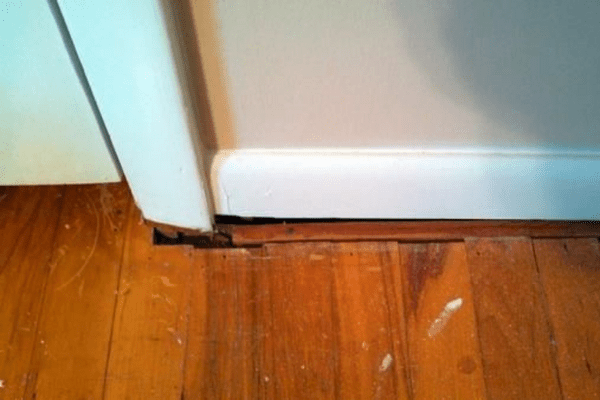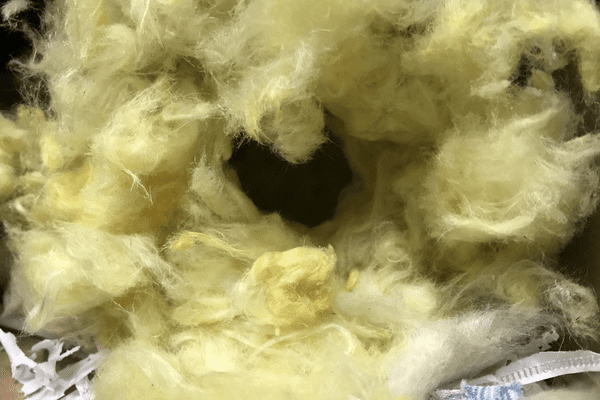
When temperatures start to cool down, mice and other pests living outside start seeking warmer places to nest for the winter. In urban areas like New York City, their best choice might just be your nice, heated house or apartment building.
Knowing if and when a mouse has found its way into your home is the first step in getting rid of it. Left unchecked, house mice reproduce quickly and may potentially cause all sorts of damage to your walls, building, electrical wiring, and personal belongings.
If you suspect that you have a mouse in your cozy townhouse or apartment, here are 9 signs of mice to look out for. Finding one or more of these signs together might mean it’s time to give your exterminator a call.
9 Common Signs of Mice
1. Droppings
- Mouse droppings are generally 1/8–1/4 inch long, resembling dark grains of rice with tapered ends. Fresh droppings are usually dark brown, and over time they may lighten in color.
- Droppings are often found where mice feed, such as in kitchen cabinets, pantries, and other areas where food is stored.
- The amount of droppings that you find can be a good indicator of how serious the infestation is.

2. Scratching Noises
- Scratching noises at night might be from a mouse scurrying around your home in search of food or shelter.
- As they travel about, you might hear these sounds coming from behind walls, in the ceiling, or across the floor.
3. Odor
- Mice emit a distinctive, musky smell that comes from the ammonia or urine. Mice use this odor to help establish themselves and mark their territory.
- This odor may be more noticeable in enclosed areas like pantries, drawers, and cabinets.
- Mouse odors that become stronger over time might indicate a growing infestation.
- Unpleasant, rotting odors can also come from mice that have died.
4. Gnaw Marks and Scratches
- In order to file down their teeth, mice will chew on inedible materials like wood, plastic, cables, and electrical wiring.
- Check for grooves and markings along baseboards and around cracks or holes in your walls.
- Gnaw marks and scratches are usually small and clean cut, consisting of two parallel grooves that are 1–2 mm apart.
- If left alone, accumulated scratching and gnawing can lead to structural damage in your home.

5. Holes
- Mouse holes might appear as damaged sections of walls or paneling, a small gap or hollowed crack in the foundation, or space created by crumbling mortar.
- Check for gaps or cracks under and behind kitchen cabinets, inside closets, around doors and floor vents, and where the floor and wall meet.
- Mice can fit through openings as small as a dime.

6. Runways
- Mouse runways look like dirty or greasy smudges along floors and baseboards, created by their bodies and fur rubbing onto the surface.
- Mice tend to follow the same path night after night, which creates these distinct tracks.
- As you inspect your home, check walls and sidings with a flashlight to see any smudges or discoloration that might be tracks or rub marks from mice.
7. Nests
- Mice like to build nests out of soft household materials like fabric, shredded paper, and insulation.
- Nests are typically located in dark spaces, such as inside cabinets and drawers or behind drywall and large appliances.
- Mice tend to nest near food sources, so you’re more likely to find them around pantries or cabinets where food is stored.

8. Urine Pillars
- Urine pillars are small mounds of grease, dust, dirt, and urine that shines under ultraviolet light.
- They can be found along active runways alongside mouse droppings and other signs.
9. Unusual Pet Behaviors
- If your pet hears or smells a mouse in your home, they might show unusual interest in that spot.
- They may appear extremely alert, have a vocal reaction like barking, or scratch at spaces under refrigerators, stoves, or low-clearance furniture pieces.
How to Keep Mice Out of Your Home
Here are some preventative steps you can take to keep mice out:
- Reduce clutter
- Vacuum regularly
- Keep food sealed and stored properly
- Don’t let garbage build up
- Use trash cans with light-fitting lids
- Seal cracks and crevices in walls
- Fill large holes with steel wool or copper mesh
- Install door sweeps
- Cover ventilation ducts with wire screens
About MMPC
If you’re having trouble with mice in your house or apartment, MMPC can help. With 25+ years of eco-friendly pest management experience, our friendly and knowledgeable pest experts will help you find the right solution. Just give us a call at (212) 218-8218 or use our contact form to get in touch!
